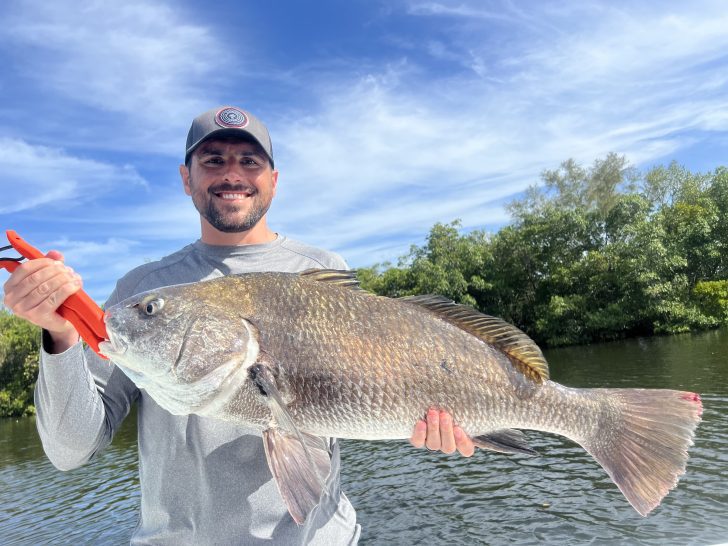In the Tampa Bay area this time of year, tarpon take center stage with redfish a close second in terms of popularity, but one of the fish that gets forgotten is the black drum.
The black drum is in the sciaenidae family of fish, along with the red drum and speckled trout. What they have in common is the ability to drum to call their mate.
Some people may frown upon the black drum but, in actuality, the smaller drum (puppy drum) are good table fair and the larger ones are great tackle testers. Black drum have to be 14 to 24 inches to keep in the Tampa Bay area. Around 4 to 7-pound black drum are actually good to eat with very white flaky meat but, once they start getting larger, their meat gets tough and not so good. This is where the sport of catching and releasing large black drum becomes fun. Typically, 20 to 50-pound drum are caught in Tampa Bay with some fish even larger. These fish can reach over 100 pounds and can travel in small to very large schools of fish. They can be caught all year around the docks, bridge pilings, oyster mounds, flats and sand bar edges.
Some of the most exciting black drum fishing happens at the beginning of the year between January and March, depending on the water temperature, where large schools of black drum enter Tampa Bay for spawning. This is when you will see schools of them going around in circles and drumming. They will also run the edges of the flats or sand bars. A good spinning rod setup that can handle 20 to 50-pound fish is what will be needed. Live large shrimp will work, but a ¼ to 3/8-ounce jig head with a Saltwater Assassin shrimp or Lit’l P & V in brown glass minnow or new penny colors with some Pro-Cure shrimp bait gel to add scent will also work. This pattern at the mouth of the Bay just inside the Skyway bridge and I-275 leading up to it will not last long. Towards March, they will usually start to migrate up into Tampa Bay following the sand bars along the edges of the grass flats all the way to the major bridges like Gandy, Howard Franklin and the Courtney Campbell Bridge. They will stay at the bridges throughout the Summer until Fall when the water temperatures start to drop, and then the large quantities of breeder black drum will reverse this process and migrate back out of the Bay.
When fishing the bridges, you will have to up your tackle due to the bridge structure and the size of the black drum. A very heavy spinning rod with 30 to 50-pound braid and a 60 to 80-pound 4 to 5-foot-long leader with a 5/0 to 6/0 hook will work. Also, a conventional 50-pound set up with 50-pound mono, a 4-ounce lead with 4 to 5-foot 60 to 80-pound leader and a 5/0 to 6/0 hook will work. My favorite bait for bridge fishing is a half of a blue crab. They will also hit lures, eat small bait fish or cut bait along with shrimp, but the blue crab really gets the nod. They like to hang out near the pilings, so make sure you get your bait close to the piling when fishing. Many times, they will show up on your fish finder, so keep your eyes peeled when looking for an area to try.
Good luck and catch a big one!!
Capt. George Hastick Aka “The Fish Hunter”

